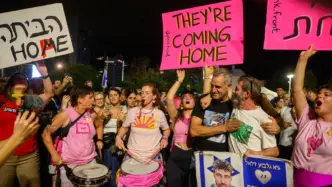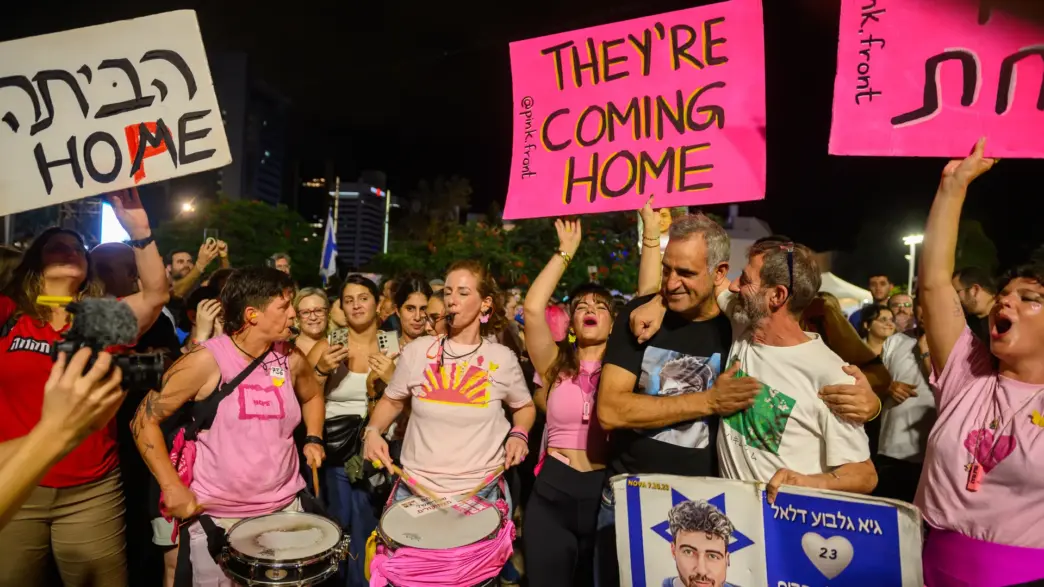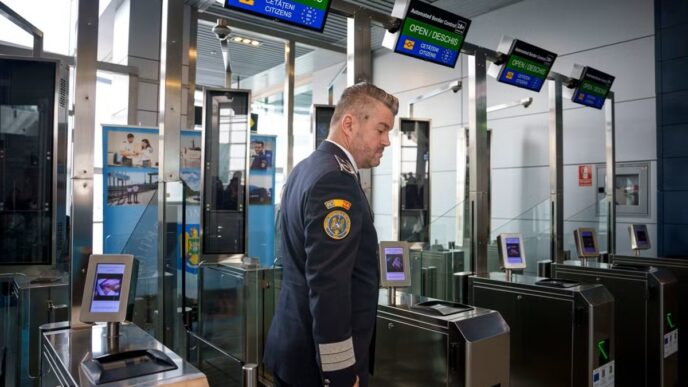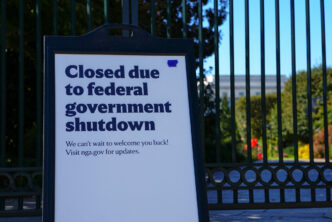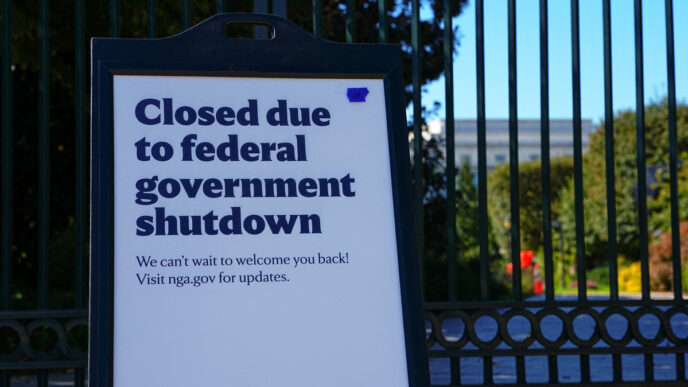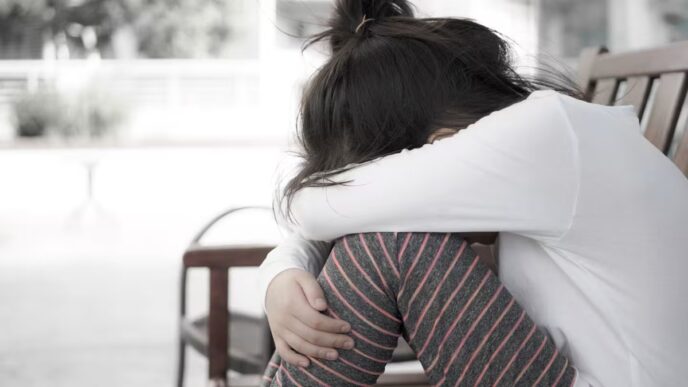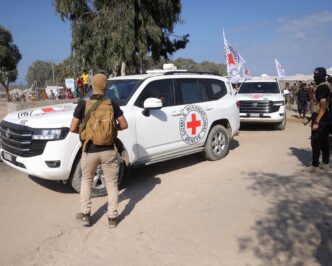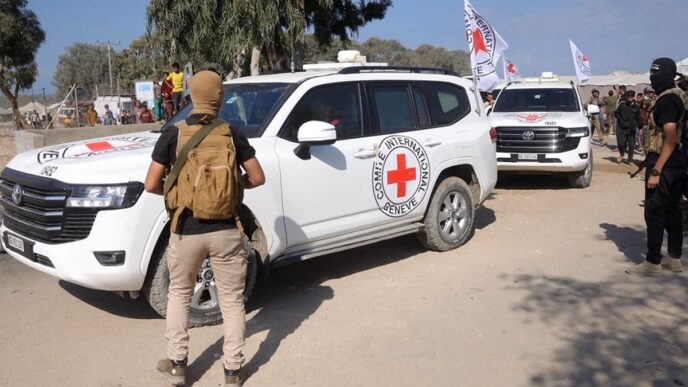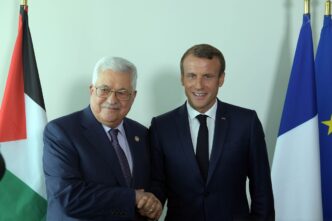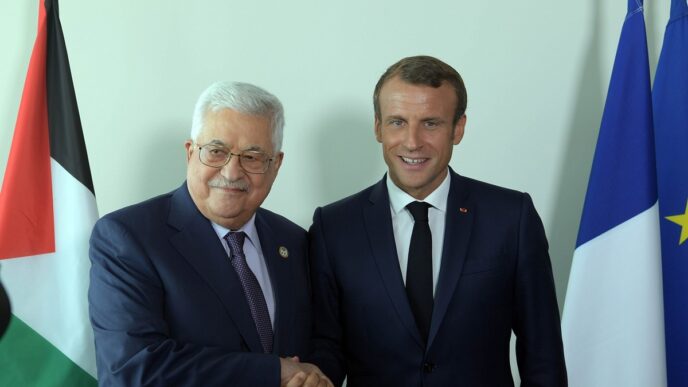Hundreds of people gathered at Tel Aviv’s Hostages Square on Monday erupted in cheers, tears, and song as word spread that Hamas had released the first group of hostages after two years of captivity in Gaza.
From early morning, crowds arrived carrying photos of the captives and waving Israeli flags adorned with yellow ribbons — the symbol of the campaign calling for their release.
Among them was Noga, wearing a badge that read “Last day.” She told AFP, “I’m torn between emotion and sadness for those who won’t be coming back.”
Hamas and its allied militants had abducted 251 people during their unprecedented assault on Israel on October 7, 2023. While many have since been freed in earlier truces, 47 hostages from that day remained in Gaza — only 20 of whom are still alive.
Since the abductions, Noga has worn a small badge every day, marking the passing days of captivity.
Over the past two years, Hostages Square has become the emotional heart of the national campaign to bring them home, with weekly rallies and vigils uniting families, supporters, and activists.
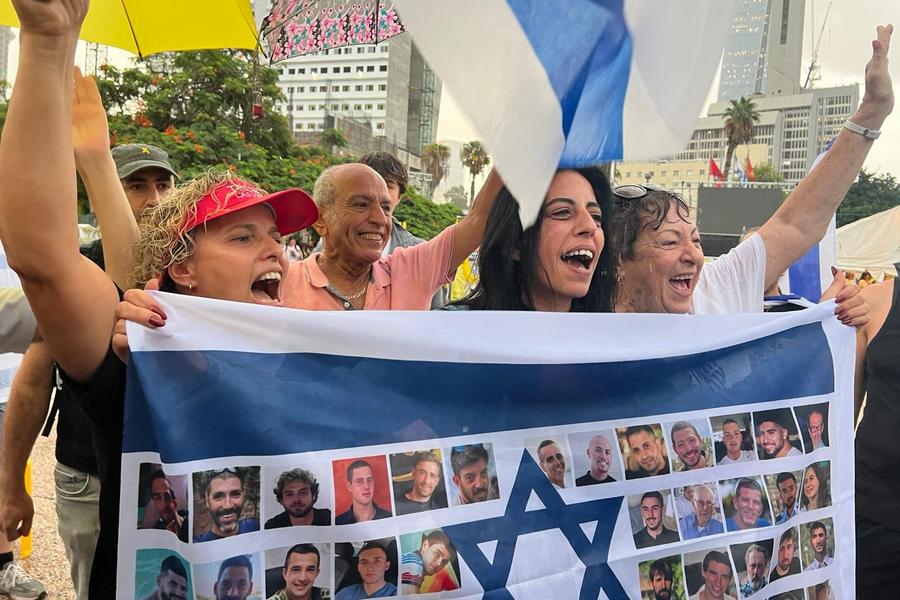
When news broke that seven hostages had finally been freed, the square exploded with singing and celebration. The Hostages and Missing Families Forum — the main organisation representing relatives of captives — had urged supporters to gather at the site, once again surrounding it with yellow ribbons.
As the war in Gaza dragged on, the ribbons became a fixture across Israel — tied to roundabouts, car handles, and even baby strollers — as reminders of those still in captivity.
In a statement, the Forum said, “Our struggle is not over. It will not end until the last hostage is located and returned for proper burial. This is our moral obligation. Only then will the people of Israel be whole.”
Emilie Moatti, a former Labour MP and one of the forum’s founders, told AFP she was “very moved,” gesturing toward the emotional crowd while holding back tears.
Giant screens in the square replayed footage from earlier rallies as the familiar song Habayta (“Homeward” in Hebrew) echoed through loudspeakers. The 1980s song, originally written for Israeli soldiers fighting in Lebanon, carried new meaning for the crowd — a hopeful anthem as the long-awaited return of hostages finally began.
The releases marked the first step in a ceasefire deal brokered by U.S. President Donald Trump. In exchange, Israel is set to free nearly 2,000 prisoners, most of them Gazans held since the war began.


 Trending
Trending 
